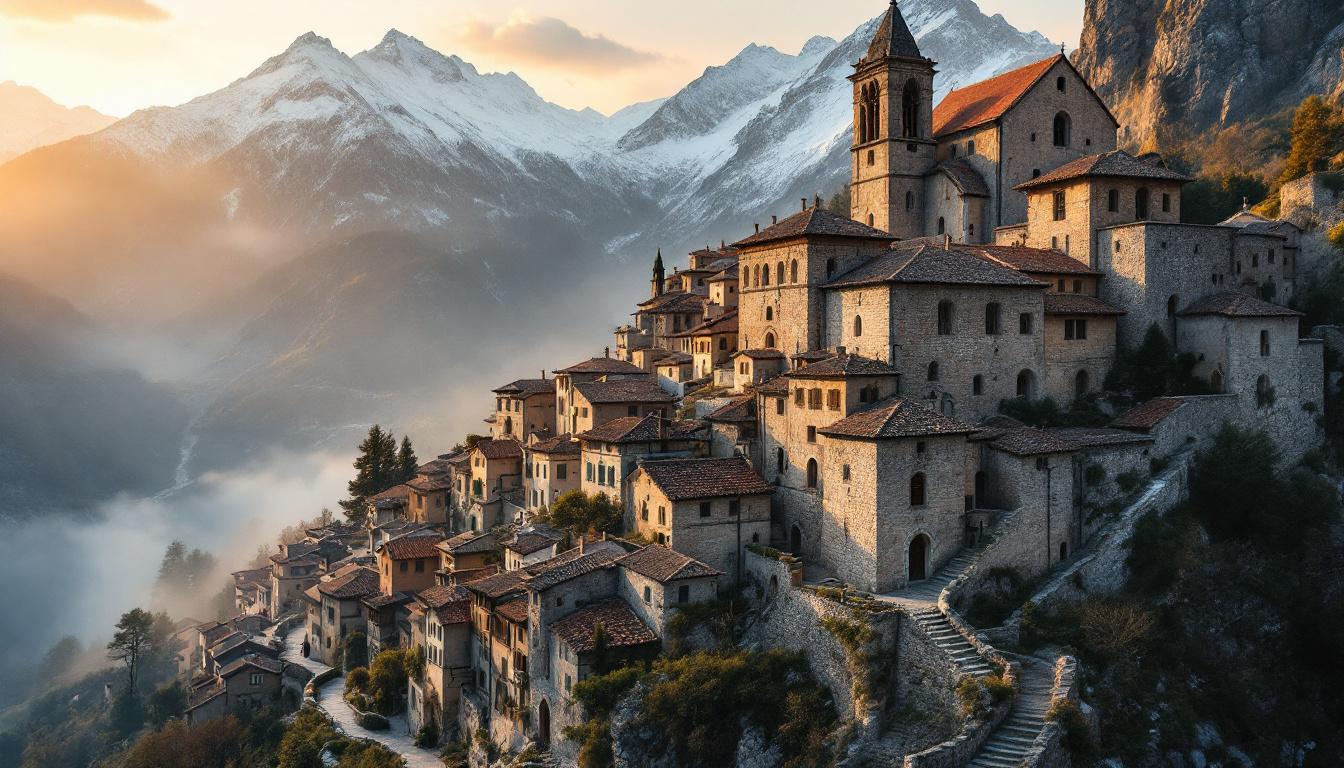This tiny border village in the French Pyrenees reveals 1,500 years of untouched history where Spain meets France. Perched at 832 meters above sea level, Coustouges commands breathtaking views across both French and Spanish Catalonia while preserving a medieval ambiance that feels frozen in time. Unlike its coastal neighbors that draw summer crowds, this hidden gem maintains the authentic rhythm of mountain life that has survived since Roman times.
A church that witnessed the fall of Rome
The village’s 12th-century Romanesque church of Sainte-Marie contains a remarkable secret. Parts of this structure date back to 370 AD – the twilight years of the Roman Empire. The graveyard nearby has been in continuous use since 980 AD, making it one of France’s oldest active burial grounds.
“Our church tells the story of fifteen centuries without interruption,” explains Marcel Boutet, local historian. “Romans, Visigoths, Moors, Franks, and Catalans – they’ve all left their mark on these stones.”
Where two nations blend in perfect harmony
Coustouges occupies a unique cultural position as a French village with deep Catalan roots. This duality creates a fascinating blend of traditions visible in everything from architecture to cuisine. The improved road bridge to Figueras, Spain has strengthened these cross-border connections, making Coustouges an ideal base for exploring both countries. This position mirrors other border towns where authentic Catalan culture thrives.
Festivals that preserve ancient Catalan identity
Throughout the year, Coustouges comes alive with celebrations that have remained largely unchanged for centuries. During these festivities, locals don traditional costumes, perform Catalan dances, and share regional specialties. The atmosphere evokes the same medieval spirit found in nearby Spanish towns where ancient festivals still thrive.
Nature’s playground at your doorstep
The surrounding mountains offer exceptional hiking opportunities with well-marked trails radiating from the village. Wildlife enthusiasts will spot hawks circling overhead, while vibrant dragonflies hover near mountain streams. The natural beauty rivals that of other hidden mountain villages where nature remains pristine.
Where Templars once roamed
Local legends claim the Knights Templar maintained a secret presence in Coustouges during the 12th century. While historical evidence remains elusive, the strategic border location would have made it valuable to these medieval warrior-monks, much like other French villages that served as Templar outposts.
“The old stones speak if you know how to listen,” says Marie Puigcercos, 82-year-old lifelong resident. “My grandmother showed me marks on the church wall that Templars used as secret signs.”
Winter transforms this mountain haven
While summer brings hikers and history enthusiasts, winter reveals another side of Coustouges. The surrounding mountains collect snow, creating spectacular winter landscapes and opportunities for snow-shoeing just minutes from the village center. This seasonal transformation mirrors what happens in other Catalan villages that become winter wonderlands.
Practical considerations for visitors
Reaching Coustouges requires a car, following the D115 through Céret and Arles-sur-Tech, then turning left onto the D3 toward Figueras. Accommodation options include local guesthouses and vacation rentals, while nearby Saint-Laurent-de-Cerdans offers additional services including a public swimming pool just 5km away.
Standing at Coustouges’ ancient church as the sun sets behind distant Spanish peaks, you’ll experience something increasingly rare in our hurried world – a place where time moves differently, where fifteen centuries of human history remain visible in stone and tradition, and where two cultures meet in perfect harmony at Europe’s mountainous crossroads.
